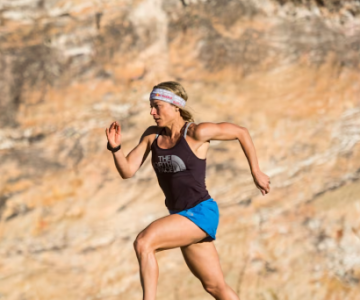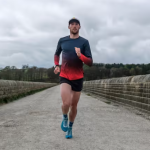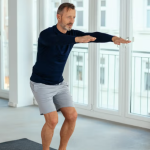Running is far more complex than just putting one foot in front of the other. When you break down the motion of running and understand the forces at play, you can begin to appreciate the body’s incredible ability to adapt to dynamic activities. Dynamic activities are those that require constant adjustment to external forces. Here are a few examples of such forces your body deals with while running:
- The impact of your foot hitting the ground on various surfaces (level, uphill, downhill, or uneven terrain).
- Navigating through trails or rough landscapes.
- Adjusting to being bumped or tripped during a race.
Your body’s musculoskeletal system (muscles and bones) and neuromuscular system (nerves and muscles) work together to produce and respond to these forces. When your foot strikes the ground, there is a force exerted by the ground onto your body, and your body pushes back against the ground. This dynamic interaction occurs in milliseconds with each step. For optimal performance and injury prevention, the force your body generates internally must equal, or exceed, the external forces acting upon it.
When the external force surpasses your body’s ability to counteract it, you risk tissue breakdown and overuse injuries. Two critical moments to pay attention to when looking at vertical motion (up-and-down movement) during running are the impact peak and the active peak. The impact peak happens right when your foot first hits the ground, and it’s a common point where injuries arise. The second peak, the active peak, occurs when your leg passes under your body and usually involves a greater force than the impact peak. Reducing the impact peak also helps lower the active peak, so strategies to reduce both peaks often overlap.
Let’s explore how different running mechanics can influence the forces acting on your body and how you can adjust your form to reduce the risk of injury.
Factors That Increase Impact Peak Force
- Running Downhill
Many runners tend to lean backward and lengthen their stride when running downhill, which increases the “braking force” acting on the body. This strategy slows you down unnecessarily, even though it may feel like you’re speeding up. The Fix: To counteract this, lean slightly forward from your hips and ankles, and aim to land with your foot flat beneath your body, maintaining a controlled pace. - Slower Step Rate
There’s a lot of talk in the running community about the ideal step rate (the number of steps you take per minute). While 180 steps per minute is often considered a good benchmark, it’s not a rigid rule, and the optimal step rate will vary for each individual. A slower step rate can lead to over-striding, putting unnecessary strain on your muscles. The Fix: If you notice that your step rate is slower than desired, try to increase it by about 7-10%. For example, if you’re taking 84 steps with your right foot in one minute (total of 168 steps per minute), aim to increase it to between 179-184 steps per minute. - Pronounced Heel Strike
A heel strike pattern occurs when your foot lands at an angle greater than 15 degrees from the ground. This is typically seen with slower step rates, over-striding, and when running downhill. This landing position often straightens the knee, which adds more stress to the leg. The Fix: To minimize this issue, focus on increasing your step rate (as mentioned earlier) and ensure your foot is landing closer to the center of your body. You can also experiment with a slower pace to adjust the position of your foot when it strikes the ground.
Improving Running Form and Efficiency
If you’re interested in learning more about running dynamics, injury prevention, and improving your running form, consulting with a physical therapist who specializes in running or a running coach can be incredibly beneficial. These experts can help you identify areas of breakdown in your form and offer tailored advice to improve your efficiency and reduce injury risk.
Performance Assessments
At Precision Performance & Physical Therapy, we offer performance assessments where we analyze your running form, training routine, footwear, and past injuries. Our goal is to help you run more efficiently, recover from injuries, and prevent future issues. Reach out today to schedule an appointment and take your running to the next level!
Thanks for reading!





